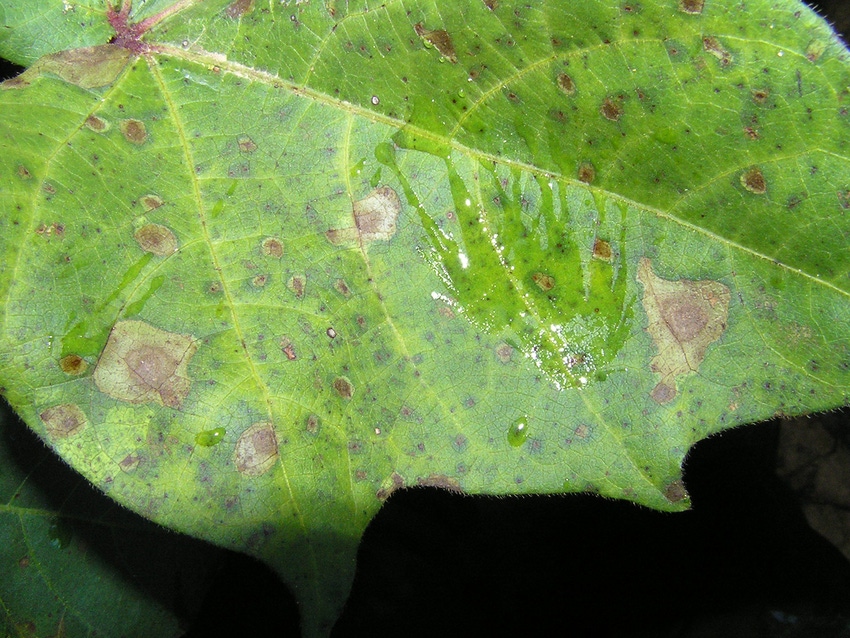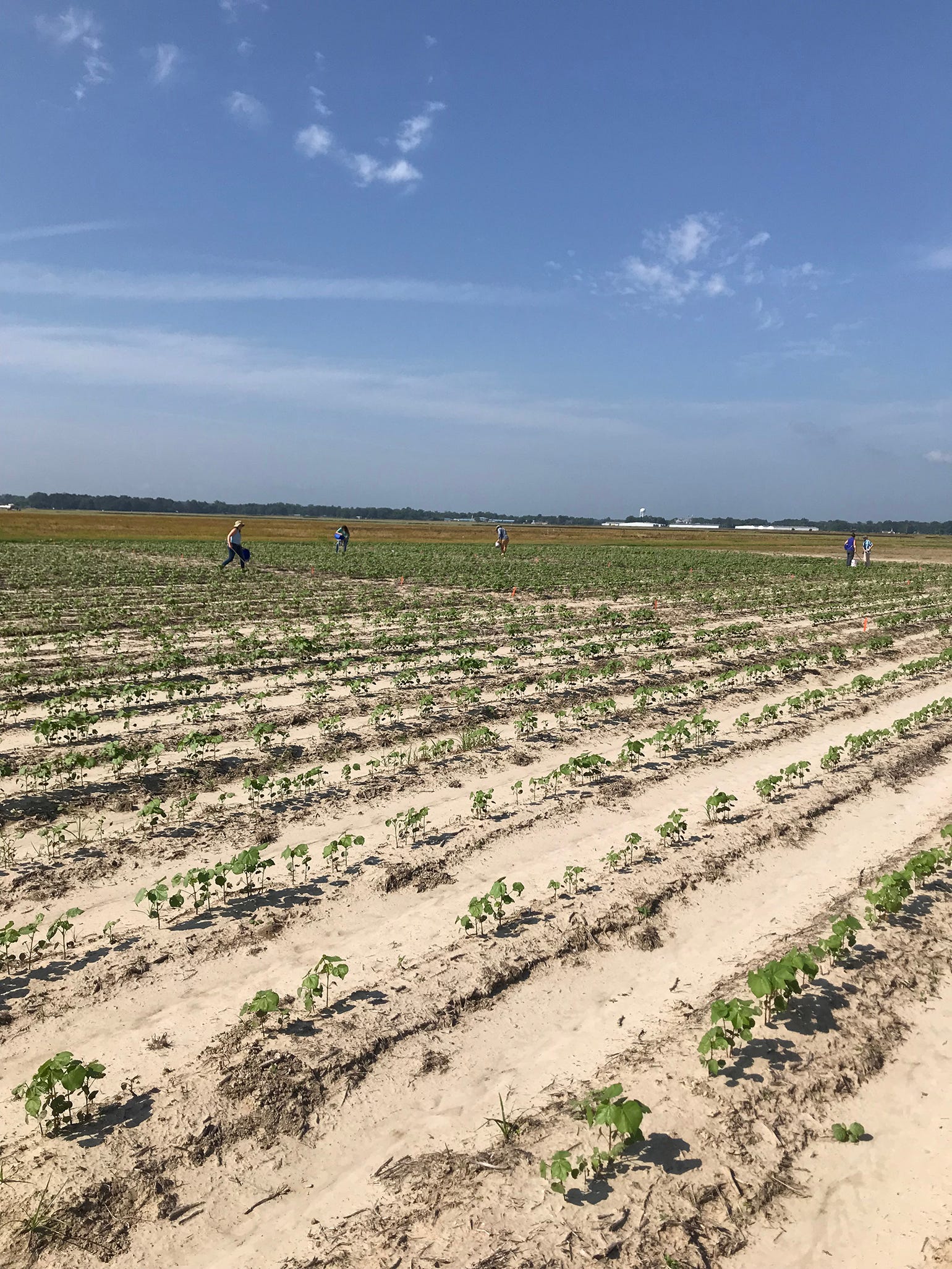
Don’t plant naked seed, advises plant pathologist Trey Price, LSU AgCenter, Winnsboro.
Price, speaking by Zoom to the Louisiana Agricultural Technical and Management Conference in early February, said seed treatments “are very effective” in managing seedling cotton diseases. “Don’t plant cotton without it,” he said. ��“If you do, you are setting yourself up for disaster.
 Trey Price, LSU AgCenter, Winnsboro. (Craig Gautreaux)
Trey Price, LSU AgCenter, Winnsboro. (Craig Gautreaux)
"In most situations, a base fungicide treatment offered by the seed company will be adequate,” he said. Price did caution producers that high disease pressure might limit “even the best seed treatment.”
He also noted that some seed companies offer flexible options for seed treatment packages that could save money.
“Do your homework and figure out what’s on the seed before you make a decision to over-treat.”
He said part of that homework concerns assessing anticipated field conditions. “Fungicide treatments are most beneficial under stressful conditions, including poorly drained soils, cool weather and poor seed quality.”
He recommended adhering to proper planting dates for a specific area and the appropriate soil temperature. “Check on long range forecast calling for warm temperatures,” he said.
Price said producers should also be aware of cotton leafroll dwarf virus (CLRDV) but not overly concerned yet. The disease, transmitted by an aphid, displays symptoms that include yellowing, cupping, chlorosis, distortion and puckering. Those symptoms typically appear within two weeks of aphid infestation. It has not been a significant problem yet in Louisiana, but other states have reported varying levels of infestation.
Aphid infestation
Price said aphid infestations in Louisiana last year were “much lighter than in 2019. CLRDV symptoms were essentially non-existent. We had one, unconfirmed, call during the season. The situation was similar in neighboring states. We have seen no obvious yield losses in the state so far.”
Target spot can cause losses, he said, and is the foliar disease meriting the most calls. It can be effectively treated with fungicides.
“Target spot starts low in the canopy after closure,” Price explained. “It defoliates from bottom to top.”
He said the disease is exacerbated by frequent rainfall events, high nitrogen rates, and poor PGR management.
“Fungicides are effective and application timing is best at canopy closure.”
He said a return on the fungicide investment is most likely if the disease begins in July and defoliation exceeds 40 % to 50 %.
The cotton leaf spot complex, Price said, typically comes with “an underlying potassium deficiency and drought stress. Herbicide injury can exacerbate the problem.
“Fungicides are effective, but we have not seen a return on fungicide investment in any of our trials yet.”
He said bacterial blight presents some management challenges since “we don’t really have materials we can apply for management.”
Best management practices
Best management, Price said, begins with resistant variety selection. Other beneficial practices include rotation, tillage, canopy management, avoiding excessive nitrogen, avoiding overhead irrigation and overwatering.
 Sampling soil in nematicide test plots. (Trey Price)
Sampling soil in nematicide test plots. (Trey Price)
Nematodes pose an increasingly significant challenge for cotton producers, too, Price said. Cotton producers may see reniform or root-knot populations in Mid-South fields. “Reniform is more widespread across the South but we also see root knot. Reniform populations have increased since the 1960s.”
Rotation is still a management option. For reniform, Price recommends rotation to sorghum, corn or resistant soybean varieties to reduce populations.
“Populations are higher and overwinter better in electrical conductivity (EC) values from https://www.farmprogress.com/30 to 60. Site-specific management with nematicides of EC zones of 0 to 60 may be economical,” he said, but will vary from field to field.
Price said cotton producers have some cotton varieties resistant to root knot nematodes, which may reduce populations. “Rotation to grain sorghum may reduce or increase root knot nematode populations, depending on the hybrid,” he said.
RKN resistant soybeans varieties may be an option, as well.
“Site-specific management, similar to reniform options may be economical. Aldicarb, Velum and Vydate are usually better than seed treatments,” he said.
“Root knot nematodes are extremely competitive with most agronomic commodities including corn, soybeans, and cotton,” he said.
“Our best advice for nematode management is to test soils and go from there.”
The annual LATMC, sponsored by the Louisiana Crop Consultants Association, was a virtual event this year due to Covid-19 precautions.
About the Author(s)
You May Also Like






